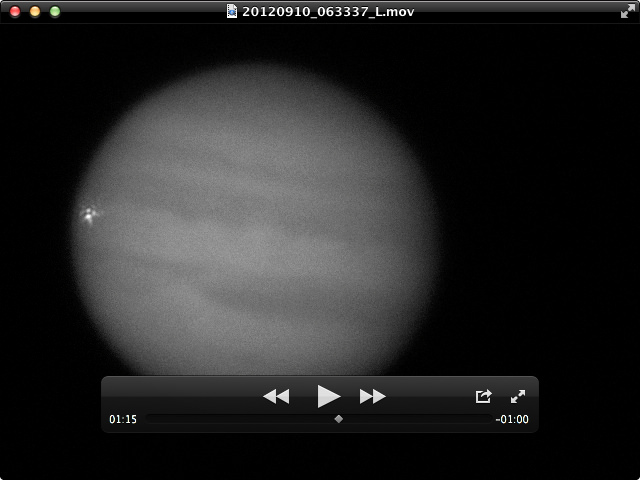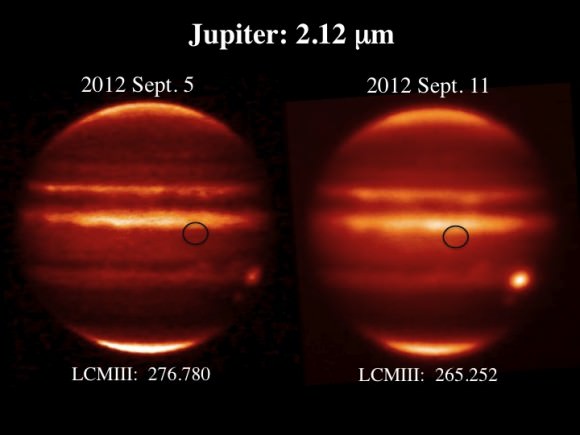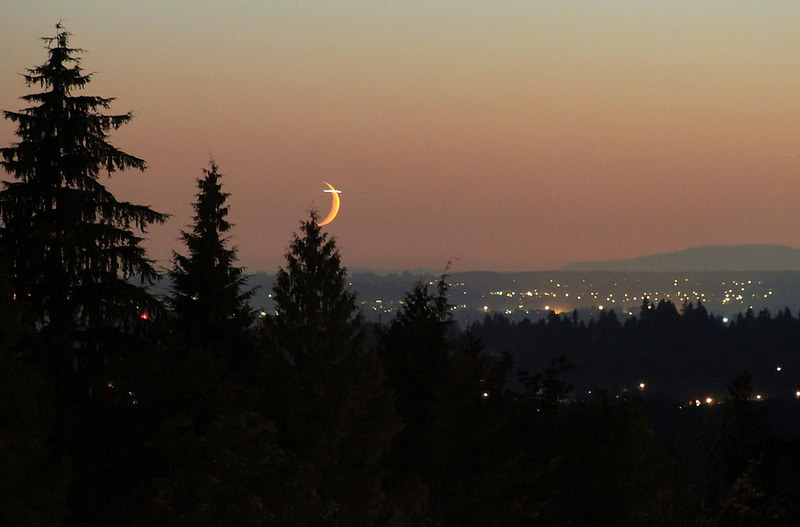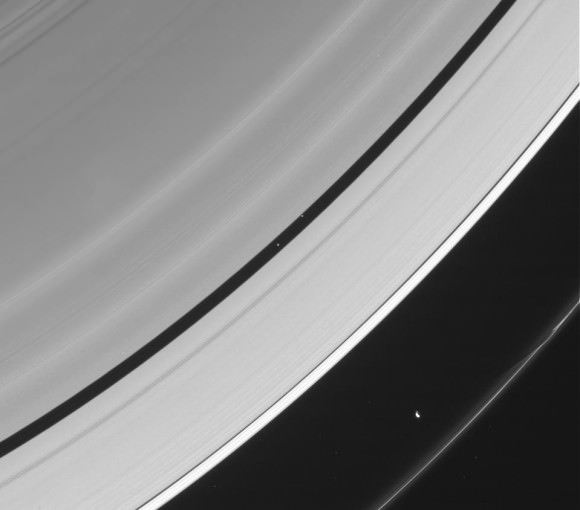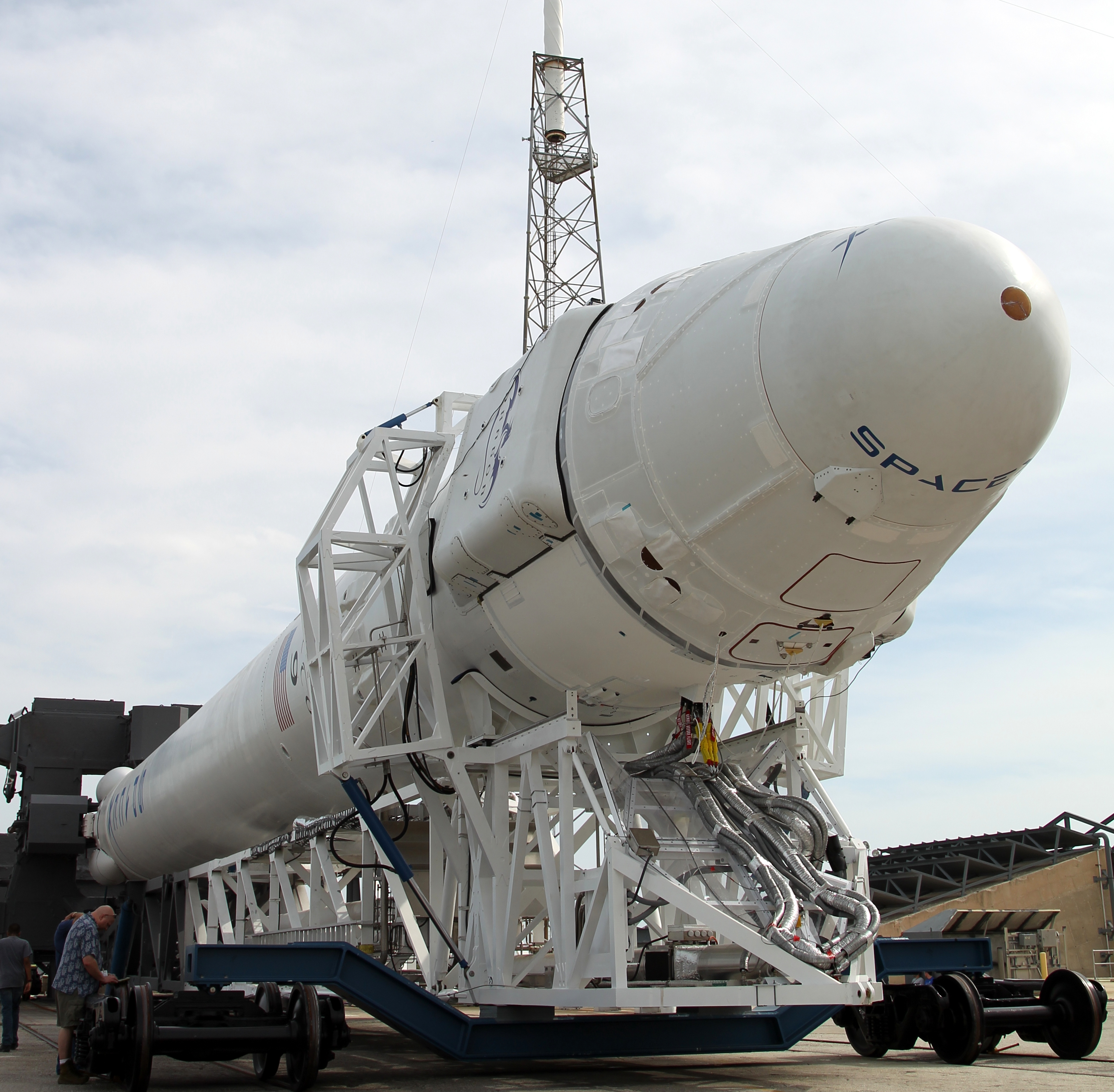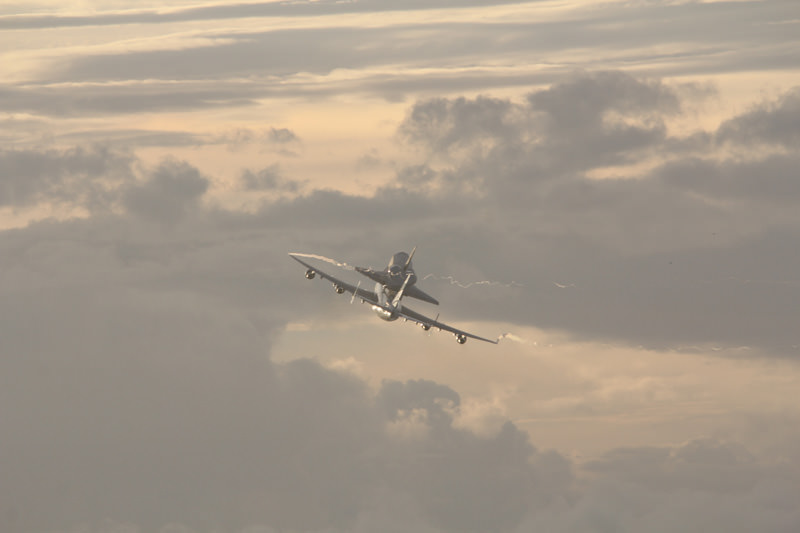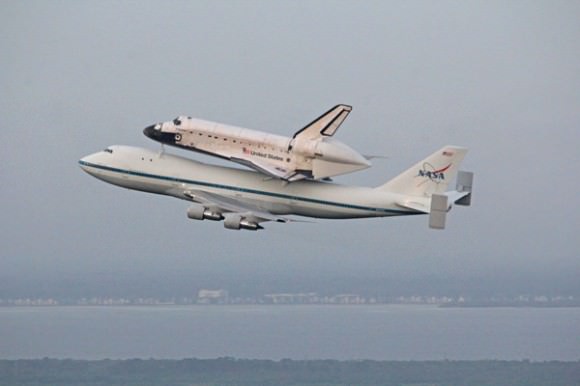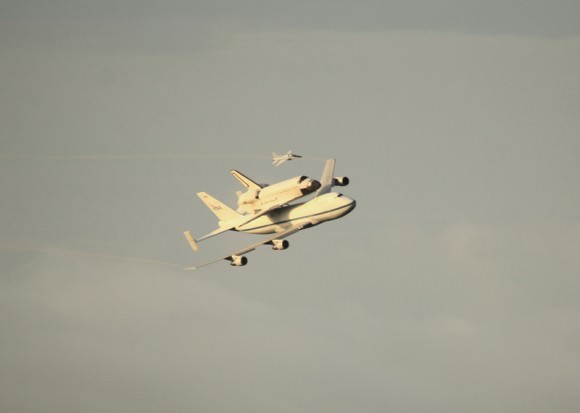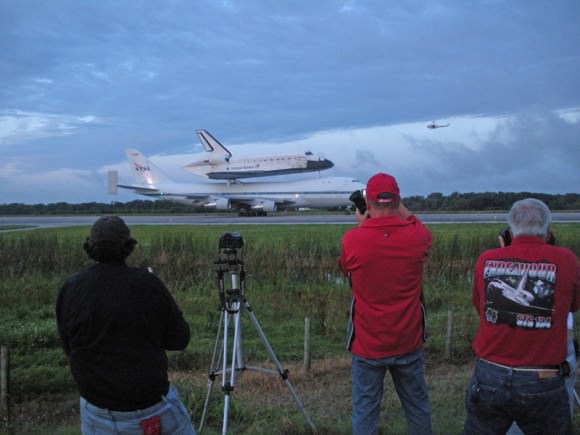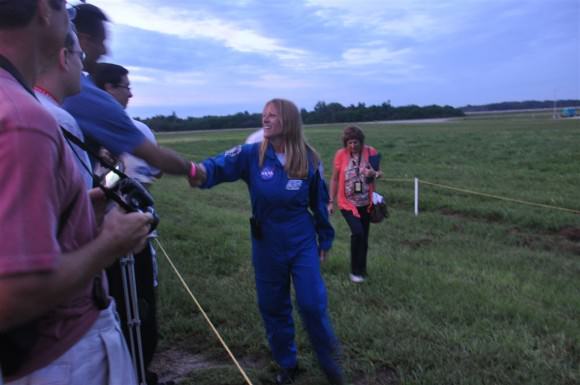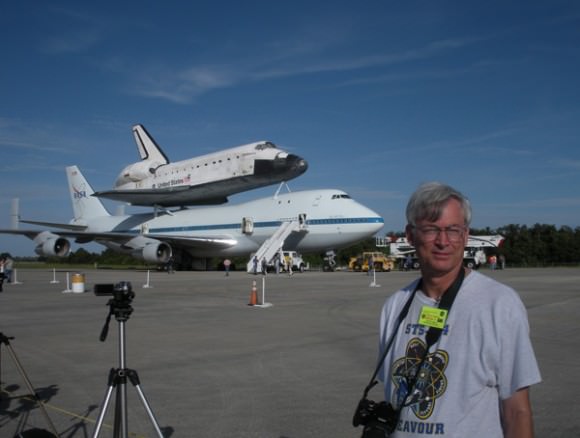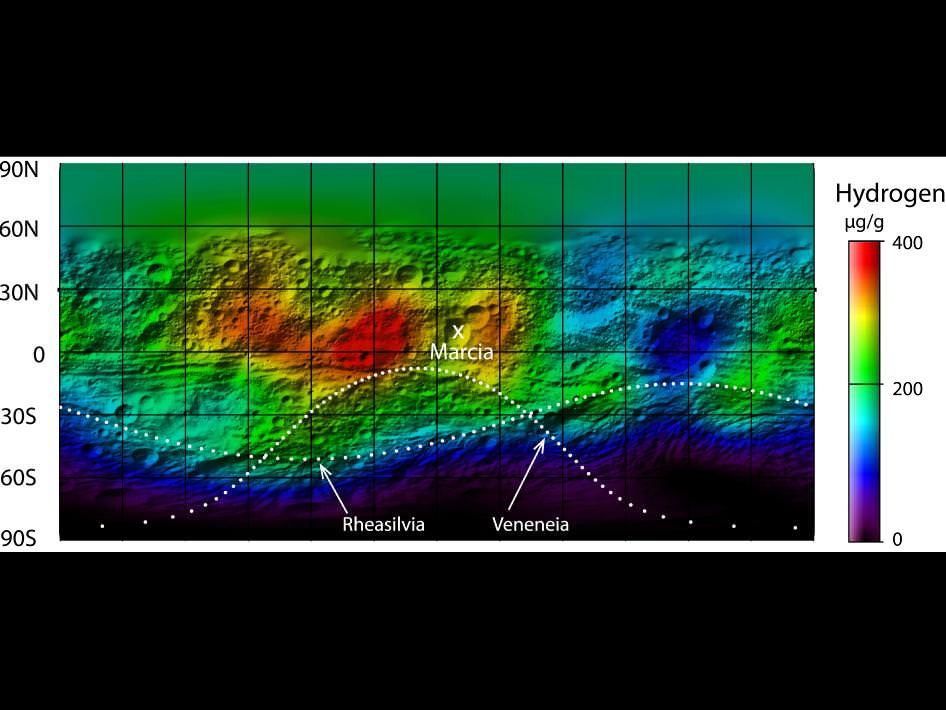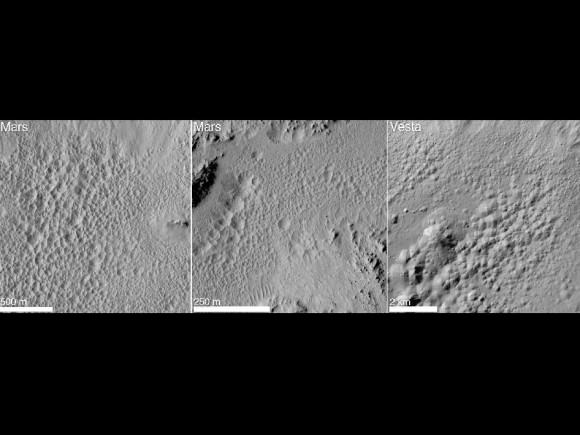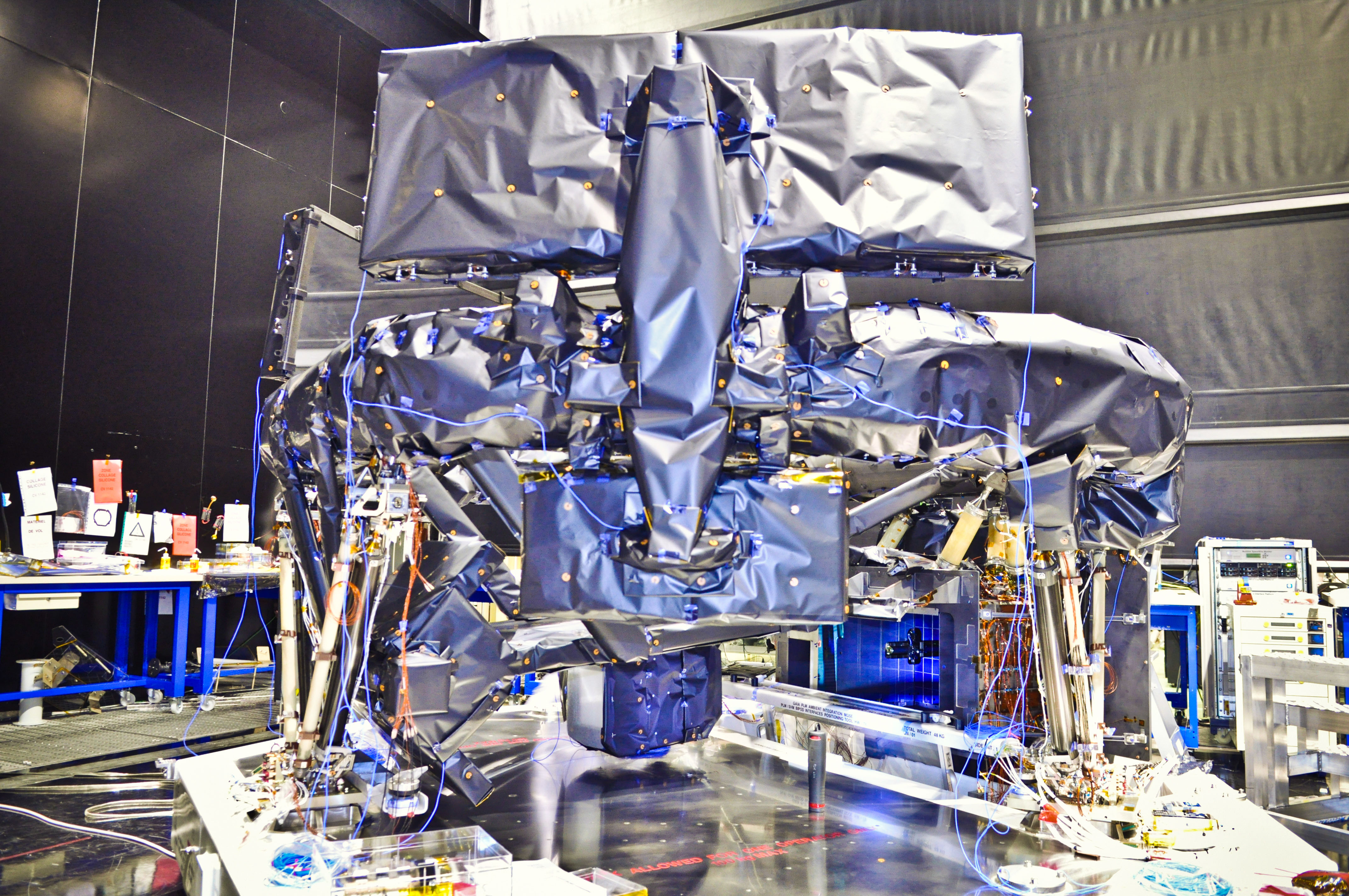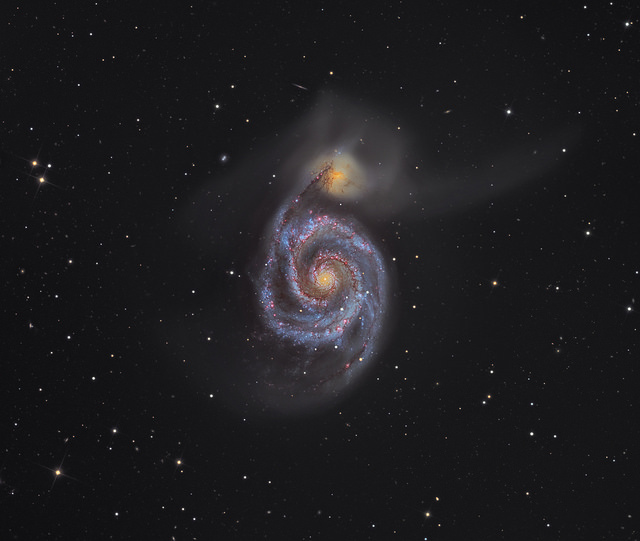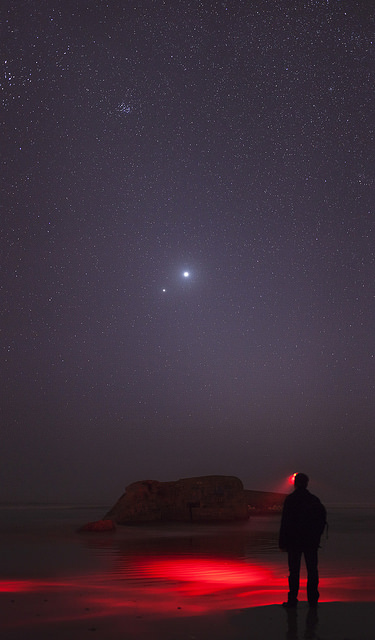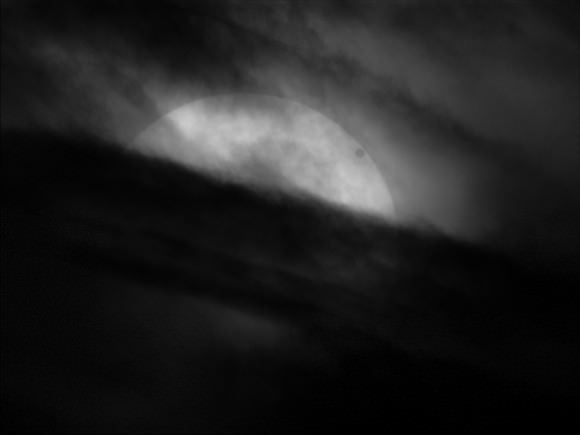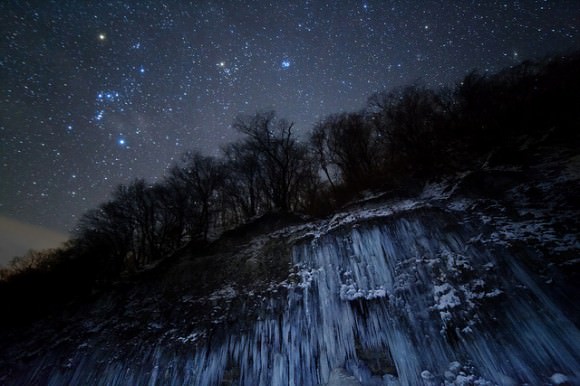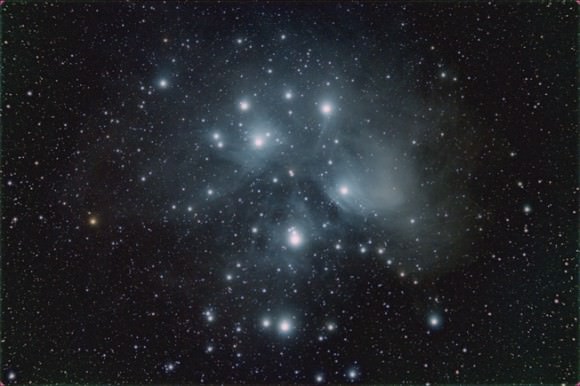An impact on Jupiter captured about 6:35 am on Sept. 10, 2012 from Dallas, Texas USA. Credit: George Hall.
A bright flash was spotted on Jupiter early on the morning of September 10, 2012, and astronomers were hoping to later see an impact “scar” which would provide more information about the object that slammed into the giant gas planet. Was it a comet, asteroid or a smaller meteor? But alas, no impact scar or debris field showed up on Jupiter’s face and the nature of this explosion may remain a mystery.
“By performing spectroscopic measurement of the debris field we hope to be capable of determining the nature of the impactor,” SETI astronomer Franck Marchis told Universe Today via email. “Without debris field it is virtually impossible since the bolide burned in the upper atmosphere. One day we may be capable of recorded a spectrum of the meteor itself (during the impact) but right now we don’t have such capabilities.”
The flash was first spotted by Dan Peterson, an amateur astronomer from Racine, Wisconsin who saw the flash as he was looking through a telescope, but he wasn’t recording his observations. He posted about his sighting on the Association of Lunar & Planetary Observers message board (ALPO), reporting the explosion, which occurred inside the southern edge of Jupiter’s northern equatorial belt of clouds.
Astrophotographer George Hall of Dallas, Texas happened to be shooting video of Jupiter at the time – although he wasn’t actually watching Jupiter himself. When he heard about Petersen’s visual, Hall reviewed his video and saw he had captured the flash at 6:35 a.m. CDT.
Video © George Hall. All rights reserved, used with permission.
Many astronomers were waiting for the next day when the impact region would be visible again to look for a debris field, as the explosion looked very similar to an impact that occurred in June 2010, which left an impact scar that was visible for several hours.
However, astronomer Mike Wong from the University of California, Berkeley had stayed up all night to estimate the amount of energy delivered by this fireball. As he posted on his blog, he predicted “that this event is too small to create a visible impact scar.”
He ended up being right.
Since there was no impact scar, the space telescopes like Hubble weren’t activated to take a look.
But some ground-based telescopes, like NASA’s Infrared Telescope Facility did take a look. Astronomer Glenn Orton, a senior research scientist at the Jet Propulsion Laboratory used the IRTF 3-meter telescope to look at Jupiter in the near-infrared, but came up empty in finding any debris or scar.
Observations of Jupiter taken with the IRTF telescope and the SpeX guide camera. The dark circle indicates the location of the flash observed on September 10 2012 (credit: G. Orton, Jet Propulsion Laboratory)
Orton was quoted in an article on ABC that he thinks a frozen comet may be the culprit.
“Most things in that part of the solar system are called Jupiter-family comets,” Orton said. “They’re ice balls that move in and have started co-orbiting around Jupiter.”
But Marchis said that since the object appears to have not entered the inner part of the planet atmosphere, the IR observation confirms that it was most likely a meteor.
And another scientist, Dr. Tony Phillips, an astronomer and the person behind Spaceweather.com, was interviewed on NPR’s Science Friday last week and he said the explosion was probably a small asteroid hitting Jupiter, but added, “We’ll probably never know for sure,”
But whatever it was, the event demonstrates how different astronomy is now from what it was just a few years ago.
“What is remarkable today is that amateur astronomers can detect such an event, and by using modern communication tools, the world of astronomers is instantaneously aware of it,” Marchis said. “Our solar system is full of those transient events (impact, volcanoes, storms), their early detection and monitoring is a great opportunity to characterize these planets or satellites, shining light on area of these bodies that cannot be seen when they are in their calm state.”
But there were a few dissenters, too. A small number of those posting on the astronomy community message boards said that since there wasn’t any scar visible, that the event really didn’t happen, and that Hall and Petersen were just seeing things. This may have been fueled by an initial discrepancy between Hall and Petersen’s timing report, but it was solved when Petersen found out that his clock was running 26 seconds fast. Others came up with different ideas about what it might have been, which included light from one of Jupiter’s moons, Adrastea, which was entering the eastern limb of Jupiter at about the same the time, to other, more wilder notions that might have involved alien spaceships.
But most astronomers concur the event did occur.
“Two observers reported the same event at almost the same time does not look to me that we could argue about the genuineness of the event,” Marchis said, noting that previous events like this have occurred in the past, with no impact scars. “Several events were observed in 1981 and 2010 as well and there were no scar as well. We can simply assume that the impactor was too small to reach the inner part of Jupiter atmosphere. It burned before reaching the lower deck because it was relatively small.”
Phillips mentioned that years ago, astronomers were skeptical that impacts like this happened in the Solar System today, but that all changed when Comet Shoemaker-Levy 9 impacted Jupiter in 1994, and with hundreds of telescopes watching the event, including the Hubble Space Telescope, “we got to see what a comet impact looked like, and analyze the chemical signature,” Phillips said.
But in this case, astronomers will very likely never know what caused the flash on Jupiter on September 10, 2012. But don’t worry – this won’t be the last time something like this happens. Marchis said in a comment on his blog that based on the current observations, it’s estimated that 50 meteors like this — or ones even more energetic — could be seen on Jupiter per year. We just don’t happen to catch very many of them in the act of occurring.
And if you’re excited about seeing explosions on other worlds, Jupiter isn’t the only place this happens. All our planets and moons get smacked occasionally, as the impact craters on the rocky bodies can attest. The best place to see this happening might be our own Moon. If you have a big enough telescope, you can join a group run through the Marshall Space Flight Center that has been watching the dark terrain of the Moon. They have observed over 260 explosions in the past 7 years.
Marchis said a better organized network of amateur astronomers watching Jupiter is important.
“I think it is important to organize a network of small telescopes that will monitor continuously Jupiter over a long period of time to be capable of estimating the flux of meteors in the outer part of the solar system, helping us to better estimate the age of icy satellite surface of Jupiter but also Saturn,” he said via email. “This is something we could do by combining professional and amateur astronomer efforts.”
Look for future updates as astronomers are trying to organize such a network.

